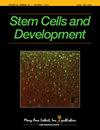通过诱导两种转录因子的表达将人诱导多能干细胞快速转化为多巴胺能神经元。
IF 2.5
3区 医学
Q3 CELL & TISSUE ENGINEERING
引用次数: 2
摘要
包括人类胚胎干细胞和人类诱导多能干细胞在内的人类多能干细胞(hPSC)为再生治疗、疾病建模和药物筛选提供了有前景的来源。已经投入了相关的努力,通过模拟大脑发育相关的信号通路,为PSC衍生的多巴胺能(DA)神经元的产生建立了强有力的诱导方案。然而,这些协议需要经过充分训练的技术和长时间才能产生成熟的DA神经元。在这项研究中,为了加速整个过程,我们通过两种转录因子ASCL1和LMX1A的诱导力表达产生了分化为DA神经元的hiPSC系。使用该hiPSC系,我们建立了一个快速简单的诱导方案,在28天内产生成熟的DA神经元。通过基因表达和基本DA神经元标志物的免疫组织化学分析来表征诱导的DA神经元。此外,在第28天通过多电极阵列系统分析细胞功能特性。该资源为高通量筛选提供了未来的应用,如需要高度验证DA神经元的药物开发和毒理学。本文章由计算机程序翻译,如有差异,请以英文原文为准。
Rapid conversion of human induced pluripotent stem cells into dopaminergic neurons by inducible expression of two transcription factors.
Human pluripotent stem cells (hPSCs) including human embryonic stem cells and human induced pluripotent stem cells (hiPSCs) provide promising sources for regenerative therapy, disease modeling, and drug screening. Relevant efforts have been invested in establishing robust induction protocols for PSC-derived dopaminergic (DA) neuron generation by mimicking brain development-related signaling pathways. However, these protocols require fully trained techniques and a long time to yield mature DA neurons. In this study, to accelerate the entire process, we generated a hiPSC line differentiating into DA neurons by the inducible force expression of two transcription factors ASCL1 and LMX1A. Using this hiPSC line, we established a rapid and simple induction protocol to generate mature DA neurons in 28 days. The induced DA neurons were characterized by gene expression and immunohistochemical analyses of fundamental DA neuronal markers. Moreover, the cell functional properties were analyzed by a multielectrode array system on day 28. This resource offers future applications for high-throughput screening, such as drug development and toxicology that require highly validated DA neurons.
求助全文
通过发布文献求助,成功后即可免费获取论文全文。
去求助
来源期刊

Stem cells and development
医学-细胞与组织工程
CiteScore
7.80
自引率
2.50%
发文量
69
审稿时长
3 months
期刊介绍:
Stem Cells and Development is globally recognized as the trusted source for critical, even controversial coverage of emerging hypotheses and novel findings. With a focus on stem cells of all tissue types and their potential therapeutic applications, the Journal provides clinical, basic, and translational scientists with cutting-edge research and findings.
Stem Cells and Development coverage includes:
Embryogenesis and adult counterparts of this process
Physical processes linking stem cells, primary cell function, and structural development
Hypotheses exploring the relationship between genotype and phenotype
Development of vasculature, CNS, and other germ layer development and defects
Pluripotentiality of embryonic and somatic stem cells
The role of genetic and epigenetic factors in development
 求助内容:
求助内容: 应助结果提醒方式:
应助结果提醒方式:


